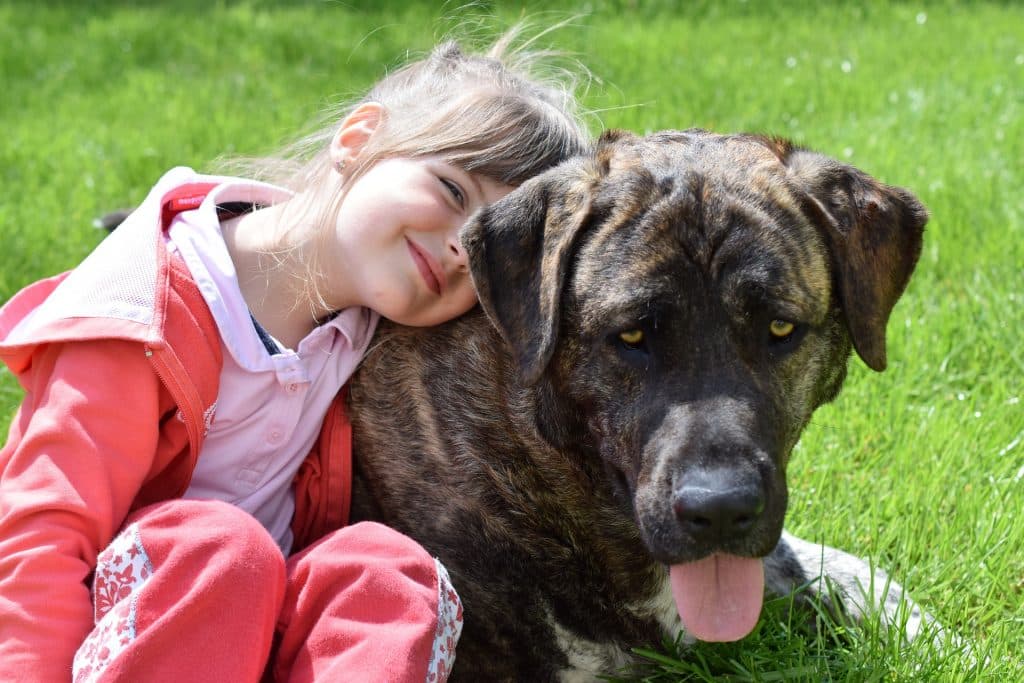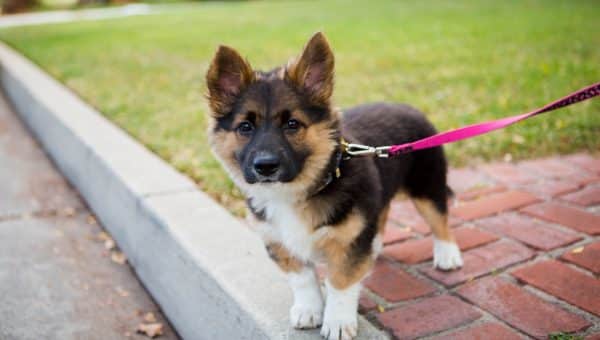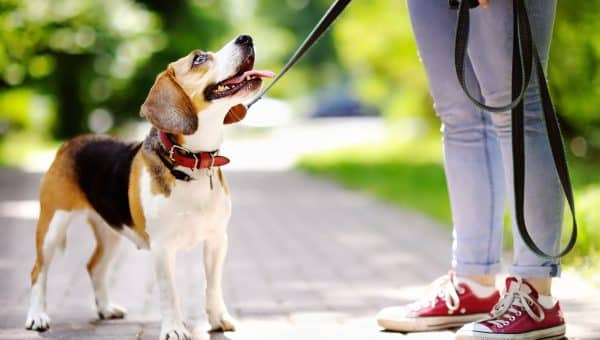Kids and dogs are generally like peanut butter and jelly—they just go together. And this makes perfect sense! They share more in common than you may think. From energy levels (100% to nap in no time at all), to hobbies (puppies, like toddlers, test the world by putting everything in their mouth), to their love of snuggles, kids and dogs seem to be on the same wavelength.
That’s why when parents inevitably hear, “Can we get a dog, pleeeease?”, it’s just downright hard to say no. Many parents will add the caveat, “Only if you promise to take care of him!”, but don’t always know where to begin.
What are age-appropriate dog care tasks for children?
We’re so glad you asked! Ideal tasks for children include feeding and watering, poop patrol, brushing and—you guessed it—walking the dog!
Why it’s important for kids to walk the dog
Teaching a child to walk a dog is a fantastic way to not only teach your child how to be responsible for their pet but also to teach your dog to see children as members of the household who they should listen to. Having just introduced a new puppy into our household, dog-walking was a go-to responsibility for any kids aged five or older because it helped to establish the roles within the household for our new puppy.
This can be especially important if your dog has tendencies to be a pack leader—like our spirited and stubborn Bernedoodle. Puppies who learn early on that even the smallest people are still higher in the pecking order will learn to obey commands given by children in the family. Now that the Bernedoodle towers over the toddler, it’s a bit comical to see my two-year-old raise her finger and say “sit!” and watch that little puppy bum instantly hit the floor (#win!)
Are you ready to help your children take some responsibility for the dog? Here are some tips to get started!
Step 1: Set the tone
Even if you’re just beginning to train a puppy to walk on a leash, it’s not too early to let the kids help out! One of the first commands that puppies are taught is “sit”, and once your dog is starting to show proficiency with sitting, leash-training can soon follow. Sitting calmly helps to set the tone for a good walk session.
Tip: Dogs are naturally excited when they see a leash—”A walk! My favorite!” It’s perfectly fine to be a little excited—wagging tails, flapping tongues—but too much excitement can quickly escalate to behaviors that will make it difficult to set the tone for a good walk. Is your dog just too excited? Try exercising him before the walk—it’ll do wonders for the energy level and the attention span!
Help to set the tone for your child. Have them give the command “sit”, and if the dog doesn’t respond, reinforce the command. Once the dog responds to you, have your child repeat the command and then reward the dog with a pat or a training treat. (Kids love to dole out treats just as much as puppies love to devour them!). This helps the dog realize that the child can give the command and has the power to give treats, which lends instant credibility.
Step 2: Clipping the leash
Younger children may struggle to clip the leash on the dog, but if the dog sits patiently while they work the mechanism, you’re well on your way. You may need to reinforce the “sit” command while the child clips the leash, but practicing patience is never wasted, particularly if you’re working with a puppy.
Allow the child to reward the dog for patiently waiting. In some ways, the added time it takes for a child to accomplish this task pays dividends because it requires your dog to move on only when your child is ready—which reinforces who’s in charge.
Need a refresher on leash training? Check out Three Tips to Effectively Leash Train your Dog.
Step 3: Walk on
Let’s face it, one of the more difficult aspects of training a dog to walk on a leash is teaching the dog to walk with you, at your pace—even if a squirrel darts across the path (yum!) or a sudden noise startles your dog (yikes!).
But walking on a leash is a tell-tale way of knowing if your dog is responding to your leadership. Adults can usually get away with a dog that pulls or lapses in obedience because they’re usually strong enough to pull a dog back and correct them.
But children may not be stronger than their dogs—which is why establishing a child’s authority is so important. And that’s where you come in! Just like enforcing patience as a child puts on a leash, your job is to enforce that the child is the person in charge when they’re holding the leash.
Start with a command, such as “walk on!” and begin to move forward. Whatever command you choose, be consistent, and have the child use the same command in a similar voice. Repeat any commands that the child gives that are not immediately followed. Again, allow the kid to dole out the treats for good behavior.
If the dog pulls, immediately stop the exercise and start over. Keep sessions short and to the point.
The good news is: when you have trained your dog how to walk with your child, you can be very confident that he understands his role in the family. And follow-on training will be all the more rewarding, for both kid and pup! You may be surprised at just how gentle your dog becomes with your child because he recognizes not only that the child is a leader, but also that he’s just a little tyke.
So now that you have mastered training the dog to listen to the kid—what about training the kid?
Step 4: Build good habits
Anyone who has owned a dog understands that training can be difficult and frustrating. But children may not appreciate that training is a process…sometimes a slow process. As you work with a child, be sure to establish good training habits for them. Children (like puppies!) have much shorter attention spans, so sessions that are shorter can be more productive. (Hint: just as you reward the dog with treats, reward the kid as well!)
Above all, it’s important to be there to support both puppy and kid, and to ensure that the kid understands that he has a big responsibility too! Not only is he responsible for his dog’s safety, but his dog is learning from him each and every time. This means that children must understand how to speak authoritatively (but not angrily) to their dogs, and they must handle them confidently (but not aggressively).
One of the more rewarding aspects of having the kids help out is watching their relationship with the family dog grow into something that will last a lifetime!
Looking for more resources?
If you want to learn more about how to incorporate your kids into your dog’s care routine, check out some of the tips at PetMD, WebMD, and the American Kennel Club. Whether you’re training a puppy to work with a kid (and vice versa!) or teaching an old dog new tricks, both dogs and kids will learn from each other and grow together. And there’s just nothing sweeter than watching the love between a kid and his dog!








